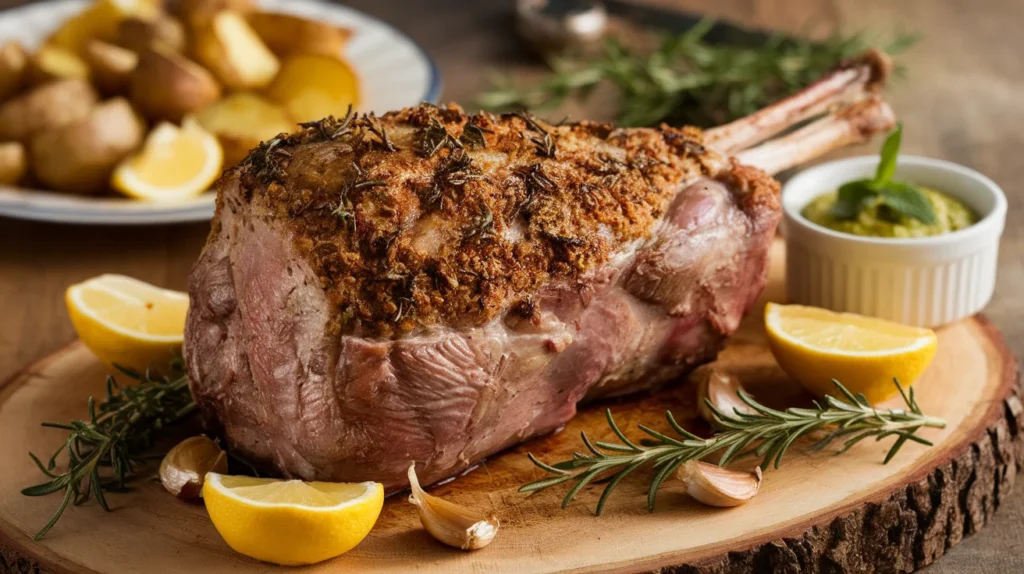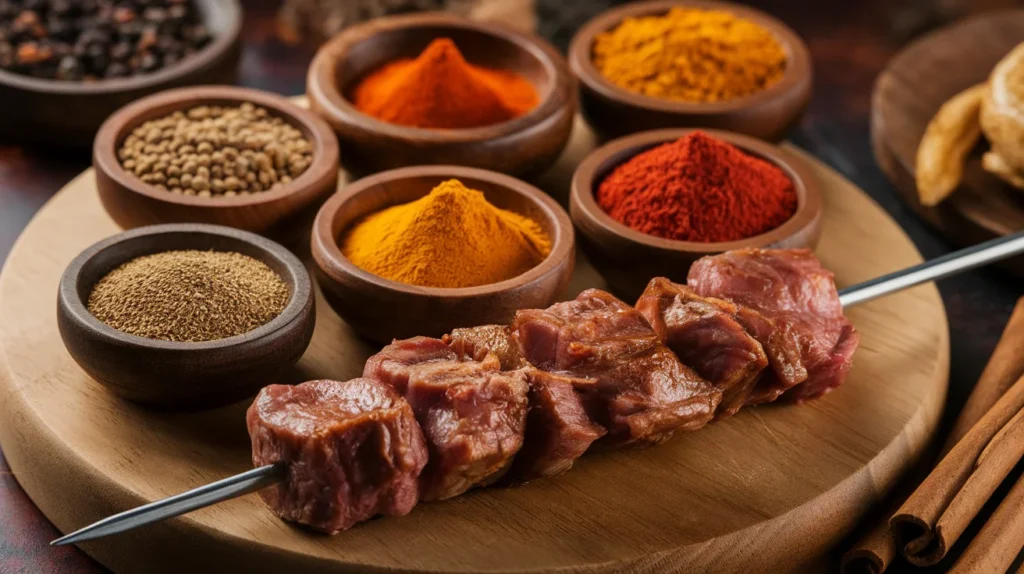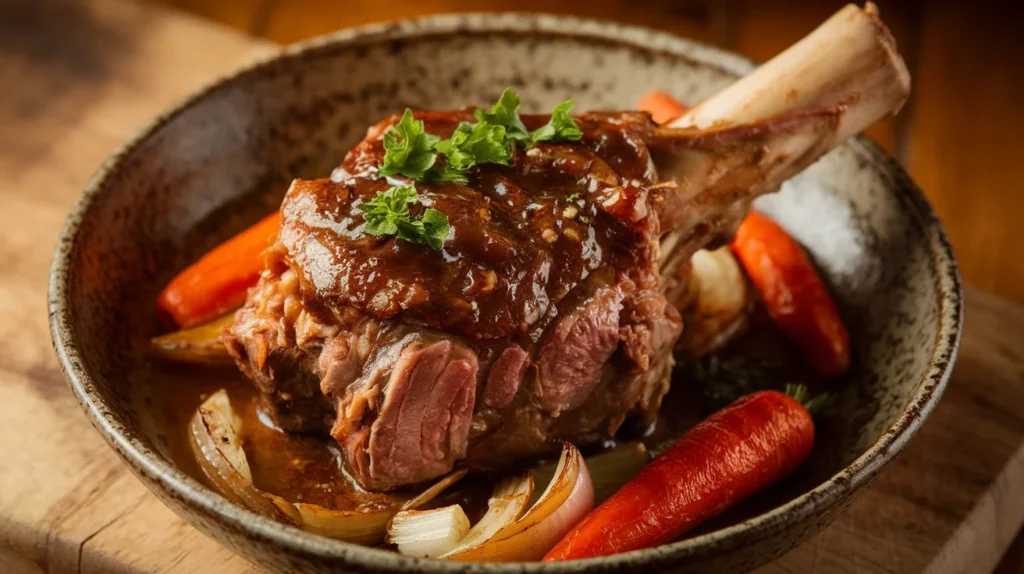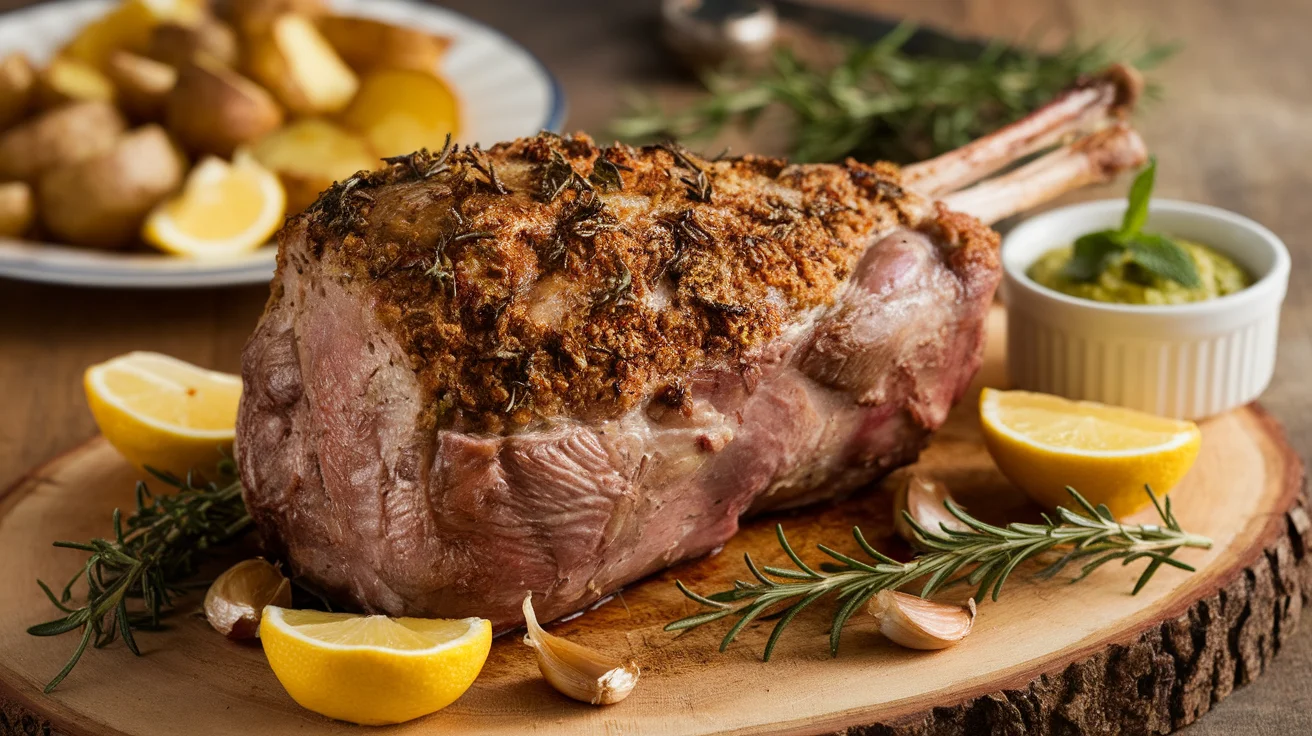Introduction
Lamb is an incredibly versatile and richly flavored meat that is cherished in cuisines around the globe. Because of its unique, slightly gamey taste, it serves as the perfect canvas for a wide variety of seasonings and spices. Indeed, the right choice of seasonings can elevate lamb dishes, enhancing its natural flavors while simultaneously adding layers of complexity and depth. Furthermore, whether you’re preparing a hearty roast for a family gathering, grilling chops for a summer barbecue, or stewing lamb shanks for a cozy dinner, the seasonings you choose play a critical role in creating a truly unforgettable dish.
Additionally, lamb’s rich flavor profile pairs exceptionally well with both traditional herbs and bold, aromatic spices. For instance, classic combinations like rosemary and garlic bring out its savory essence, while global influences, such as Middle Eastern cumin or Indian garam masala, introduce exciting new dimensions. Consequently, selecting the right seasonings can transform an ordinary dish into something extraordinary.
Moreover, it’s worth noting that different cuts of lamb and cooking methods interact uniquely with seasonings. Because roasting, grilling, and stewing all impart different textures and intensities of flavor, choosing herbs and spices that complement these methods is essential. Therefore, understanding lamb’s culinary versatility not only broadens your cooking repertoire but also allows you to experiment with diverse flavor profiles from around the world.
In short, by thoughtfully pairing lamb with the right seasonings, you can create dishes that are both sophisticated and deeply satisfying.
In this article, we’ll explore the best seasonings for lamb, delving into classic combinations, international influences, and tips for pairing lamb with vegetables, sauces, and sides. From marinades to rubs, we’ll provide all the details you need to enhance your next lamb recipe. Let’s dive in!
Understanding Lamb’s Flavor
Characteristics of Lamb’s Flavor
Lamb has a distinctive flavor profile that varies depending on the cut and cooking method. Known for its tender texture and slightly earthy taste, lamb’s natural flavor pairs well with aromatic and earthy seasonings that complement its richness without overpowering it. Cuts such as the leg, shoulder, and rack offer different levels of marbling and tenderness, which can affect how seasonings interact with the meat.
How Seasonings Complement Lamb
Seasonings serve two purposes: enhancing the natural flavor of lamb and adding new dimensions to the dish. For example:
- Herbs such as rosemary and thyme amplify the meat’s savory qualities.
- Spices like cumin and coriander add warmth and complexity.
- Acidic ingredients like lemon juice or vinegar balance the richness of lamb with brightness and tang.
By understanding the interplay between lamb and seasonings, you can craft a dish that’s both balanced and flavorful.
Classic Seasonings for Lamb: Best Herbs and Spices

Lamb is widely celebrated for its remarkable ability to pair effortlessly with a diverse array of timeless herbs and spices. Not only do these classic seasonings enhance the meat’s natural richness, but they have also stood the test of time in both traditional and modern recipes. Moreover, their unique aromatic qualities bring depth and complexity to lamb dishes, making them even more enticing. Whether used to complement the savory essence of a roast or to create a flavorful marinade for grilling, these seasonings have proven indispensable for highlighting lamb’s unique taste while adding a refined, aromatic dimension.
Rosemary: A Classic Herb for the Best Lamb Seasonings
Rosemary is perhaps the most iconic seasoning associated with lamb. Its woody, pine-like aroma complements lamb’s earthy flavor, making it a staple in roasted lamb recipes.
- How to Use: Finely chop fresh rosemary or crush dried leaves and sprinkle over lamb before cooking. Pair it with olive oil, garlic, and lemon for a simple yet flavorful marinade.
- Best Cooking Methods: Roasting or grilling lamb racks, chops, or legs.
Garlic: A Must-Have for Seasoning Lamb
Garlic is a universal ingredient that works wonders with lamb. Its bold and savory profile enhances the natural umami of the meat.
- How to Use: Combine minced garlic with olive oil and herbs to create a rub, or insert thin garlic slivers directly into the meat for an infused flavor.
- Best Cooking Methods: Perfect for roasting and braising.
Thyme: Earthy and Aromatic
Thyme is another popular herb for lamb, known for its delicate, earthy notes that marry well with rosemary and garlic.
- How to Use: Sprinkle fresh thyme sprigs over lamb before slow-cooking or mix with other herbs for a flavorful crust.
- Best Cooking Methods: Ideal for slow-roasted or braised lamb dishes.
Mint: A Refreshing Contrast
Mint’s bright and cooling qualities provide a delightful contrast to lamb’s rich flavor. In many cuisines, mint is paired with lamb to add freshness and balance.
- How to Use: Use fresh mint in sauces like mint jelly or combine chopped mint with lemon zest for a zesty rub.
- Best Cooking Methods: Grilled lamb chops or roast lamb with a mint sauce accompaniment.
Lemon: Bright and Tangy
Citrus elements, particularly lemon, are often used to cut through lamb’s richness. Lemon juice and zest provide a vibrant tang that complements earthy seasonings like rosemary and thyme.
- How to Use: Squeeze fresh lemon juice over lamb just before serving or include it in marinades for a zesty touch.
- Best Cooking Methods: Grilling, roasting, or as part of a finishing sauce.
Classic Combinations in Action
The synergy between these seasonings becomes evident in iconic lamb recipes:
- Herb-Crusted Rack of Lamb: A blend of rosemary, garlic, and thyme creates a fragrant crust that locks in flavor.
- Roast Leg of Lamb with Lemon and Garlic: A classic Sunday dinner featuring a zesty, herb-infused marinade.
- Grilled Lamb Chops with Mint Sauce: A refreshing and flavorful dish ideal for summer barbecues.
These classic seasonings are the foundation of great lamb dishes, but they are only the beginning. In the next section, we’ll explore how different cuisines around the world use a variety of herbs and spices to bring out the best in lamb.
Global Herbs and Spices for Lamb Dishes

Lamb is a staple in global cuisine, and each region brings its own distinctive blend of herbs and spices to the table. By drawing inspiration from international cooking traditions, you can create lamb dishes with bold and exciting flavor profiles.
Middle Eastern Flavors
The Middle East is renowned for its use of warm, aromatic spices that perfectly complement lamb’s rich taste.
- Cumin: Adds a nutty, earthy aroma to lamb. Often used in spice rubs or stews.
- Coriander: Provides a slightly citrusy flavor that brightens hearty dishes.
- Sumac: This tangy, lemony spice is sprinkled over grilled lamb to enhance its savoriness.
- Za’atar: A blend of thyme, sesame seeds, and sumac, za’atar is commonly rubbed onto lamb before roasting or grilling.
Popular Middle Eastern Lamb Dishes:
- Lamb kebabs seasoned with cumin and coriander.
- Slow-cooked lamb tagine featuring cinnamon, saffron, and ginger.
Mediterranean Flavors
Mediterranean cuisine embraces the use of fresh herbs and bold flavors to elevate lamb dishes.
- Oregano: Its robust and slightly peppery taste pairs well with grilled lamb.
- Basil: Fresh basil adds a sweet, slightly anise-like note to lamb dishes.
- Fennel Seeds: Known for their sweet and licorice-like flavor, fennel seeds add complexity to lamb roasts.
Popular Mediterranean Lamb Dishes:
- Greek-style lamb souvlaki marinated with oregano, garlic, and lemon.
- Italian lamb ragu with fennel and fresh herbs.
Indian Flavors
In Indian cuisine, lamb is often paired with complex spice blends that are both aromatic and flavorful.
- Cardamom: Adds a sweet, floral aroma to curries and stews.
- Turmeric: Provides a warm, slightly bitter flavor and a vibrant yellow color.
- Garam Masala: A blend of spices like cloves, cinnamon, and black pepper, used to season lamb curries.
Popular Indian Lamb Dishes:
- Lamb biryani flavored with saffron, cardamom, and bay leaves.
- Rogan josh, a Kashmiri lamb curry featuring paprika, ginger, and garam masala.
North African Flavors
North African cuisine uses bold spices and unique combinations to create complex lamb dishes.
- Harissa: A spicy chili paste made with garlic, cumin, and caraway, often used to marinate lamb.
- Cinnamon: Adds warmth and sweetness to slow-cooked lamb dishes.
- Ras el Hanout: A fragrant spice mix that includes nutmeg, cloves, and allspice, commonly used in tagines.
Popular North African Lamb Dishes:
- Moroccan lamb tagine with apricots, almonds, and cinnamon.
- Spiced lamb koftas served with yogurt sauce.
East Asian Flavors
Although less commonly used, East Asian seasonings offer a distinctive and flavorful twist to lamb dishes. Ingredients such as soy sauce, ginger, and star anise introduce a balance of umami, zest, and warmth, transforming lamb into a fusion-style culinary delight. These seasonings not only enhance the meat’s richness but also bring an unexpected depth of flavor, making them a fantastic choice for those looking to experiment with new and exciting ways to prepare lamb.
- Soy Sauce: Adds umami and depth to marinades.
- Ginger: Brightens lamb dishes with its zesty, slightly spicy flavor.
- Star Anise: Provides a sweet, licorice-like aroma to braised lamb recipes.
Popular East Asian Lamb Dishes:
- Mongolian-style lamb stir-fry with soy sauce and garlic.
- Braised lamb shanks with ginger and star anise.
Creating a Fusion Experience
One of the most exciting aspects of using global seasonings is the opportunity to combine them for a fusion-style dish. Imagine pairing Middle Eastern cumin with Indian turmeric and a touch of Mediterranean oregano for a truly unique lamb roast.
How to Combine the Best Seasonings for Lamb
Crafting the perfect seasoning blend for lamb is an art. It involves balancing the bold, rich flavors of the meat with complementary herbs and spices. By understanding how to combine seasonings, you can create a symphony of flavors that elevate your dish to new heights.
The Basics of Flavor Balancing
When combining seasonings, it’s essential to consider the following elements:
- Savory: Earthy herbs like thyme, rosemary, and oregano enhance the natural umami of lamb.
- Spicy: Warm spices like cumin, paprika, or chili flakes add heat and complexity.
- Sweet: Subtle sweet notes from cinnamon, fennel, or allspice balance bold flavors.
- Acidic: Ingredients like lemon zest or sumac brighten and cut through the richness of the meat.
- Salty: A touch of salt helps amplify all other flavors without overpowering them.
Customizing Seasoning Blends
Creating your own seasoning blend allows you to tailor flavors to your preference. Here are some examples:
- Mediterranean Herb Blend:
- Ingredients: Dried rosemary, thyme, oregano, garlic powder, and a pinch of lemon zest.
- Best for: Roasting or grilling lamb chops or racks.
- Middle Eastern Spice Mix:
- Ingredients: Ground cumin, coriander, paprika, sumac, and a hint of cinnamon.
- Best for: Lamb kebabs or slow-cooked stews.
- Indian Curry Rub:
- Ingredients: Garam masala, turmeric, ground ginger, cayenne pepper, and crushed cardamom pods.
- Best for: Braised lamb shanks or lamb biryani.
- North African Ras el Hanout Blend:
- Ingredients: Cinnamon, nutmeg, allspice, ginger, and cloves.
- Best for: Moroccan-style lamb tagine.
Layering Flavors
To achieve depth, season lamb in stages:
- Pre-Cooking: Use marinades, dry rubs, or brines to infuse the meat with flavor.
- During Cooking: Add fresh herbs or spice blends to bastings or broths.
- Post-Cooking: Sprinkle fresh herbs or finish with a squeeze of citrus to brighten the dish.
Examples of Seasoning Combos in Action
- Herb-Crusted Lamb Roast:
Combine finely chopped rosemary, garlic, and thyme with olive oil and salt. Coat the lamb before roasting to create a flavorful crust. - Spiced Lamb Stew:
Use a blend of cumin, coriander, paprika, and cinnamon to season chunks of lamb before searing. Add vegetables and a tomato-based broth for a hearty stew. - Grilled Lamb Chops with Zesty Rub:
Rub lamb chops with a mixture of lemon zest, garlic, and chili flakes. Grill to perfection and serve with a mint-infused yogurt dip.
Tips for Success
- Avoid over-seasoning: Start with small amounts, as lamb’s flavor is naturally robust.
- Match the seasoning to the cooking method: For example, bold spice blends work well for slow cooking, while delicate herbs are ideal for grilling.
- Allow time to marinate: Letting lamb rest with seasonings before cooking helps intensify flavors.
By mastering the art of combining seasonings, you can transform any lamb dish into a gourmet experience. Next, we’ll explore how different cooking methods interact with seasonings and which approaches work best for specific lamb dishes. Let me know when you’re ready to proceed!
Best Cooking Methods and Seasonings for Lamb

Lamb’s versatility allows it to be prepared using various cooking methods, each of which interacts differently with seasonings. Understanding how these techniques influence flavor helps you choose the best approach for your dish.
Roasting Lamb: Classic Elegance
Roasting remains one of the most beloved methods for preparing lamb, especially for larger cuts such as a leg of lamb or a rack of lamb. This cooking technique not only enhances the meat’s natural, robust flavors but also allows seasonings to develop into a delicious, golden crust. Furthermore, roasting offers the perfect opportunity to infuse lamb with herbs and spices, creating a harmonious balance between its rich, tender interior and its flavorful, aromatic exterior. As a result, roasted lamb dishes often become the centerpiece of special meals and gatherings, celebrated for their depth of flavor and irresistible appeal.
- Best Seasonings:
Rosemary, garlic, thyme, salt, pepper, and olive oil are classic options for roasting. Adding lemon zest or mustard creates a tangy contrast. - Tips for Roasting with Seasonings:
- Create a herb and garlic paste and spread it generously over the lamb before roasting.
- For an extra layer of flavor, add root vegetables to the roasting pan, seasoned with olive oil, salt, and herbs.
- Baste the lamb with its juices periodically to keep it moist and flavorful.
Grilling Lamb: Smoky and Bold
Grilling lamb is perfect for smaller cuts like lamb chops, kebabs, or ribs. The high heat caramelizes the exterior, locking in the meat’s juices and intensifying the flavors.
- Best Seasonings:
Bold and aromatic spices such as cumin, coriander, smoked paprika, and chili powder. Fresh herbs like mint or oregano also work beautifully as finishing touches. - Tips for Grilling with Seasonings:
- Use dry rubs or marinades to season the lamb beforehand.
- For kebabs, toss chunks of lamb in a mixture of yogurt, garlic, and spices for tenderization and flavor.
- Add a smoky element by incorporating charred lemons or peppers as garnish.
Braised Lamb: Tender and Flavorful
Braising involves slow-cooking lamb in a flavorful liquid, making it an excellent method for tough cuts like lamb shanks or shoulder. This method infuses the meat with deep, rich flavors while rendering it tender.
- Best Seasonings:
Warm spices like cinnamon, star anise, bay leaves, and cloves. Aromatic herbs like parsley or fennel are great for finishing. - Tips for Braising with Seasonings:
- Begin by searing the lamb to develop a flavorful crust.
- Add a combination of wine, stock, or tomato-based broth to the pot, along with herbs and spices.
- Simmer gently for several hours, allowing the lamb to absorb the seasoning blend.
Stewing Lamb: Hearty and Homely
Lamb stews are comforting, rich dishes that are perfect for cold weather. Stewing is ideal for bite-sized pieces of lamb combined with vegetables and a thick, flavorful broth.
- Best Seasonings:
Garlic, rosemary, thyme, cumin, turmeric, and coriander. For sweetness, try adding cinnamon or fennel. - Tips for Stewing with Seasonings:
- Sauté spices in oil before adding the liquid to release their full aroma.
- Use root vegetables and grains like barley to complement the lamb’s flavor.
- Finish with a handful of fresh herbs for brightness.
Slow-Cooking Lamb: Melt-in-Your-Mouth Texture
Slow cookers are ideal for hands-off lamb preparation, resulting in tender, fall-apart meat. This method is particularly suited for cuts like shoulder or leg of lamb.
- Best Seasonings:
Robust spice blends like garam masala, harissa, or za’atar. Dried herbs like oregano and thyme hold up well during long cooking times. - Tips for Slow-Cooking with Seasonings:
- Season the lamb generously before adding it to the slow cooker.
- Include aromatic vegetables like onions, garlic, and carrots for added depth.
- Use a combination of stock, wine, and acidic ingredients like tomatoes to create a flavorful cooking liquid.
Matching Seasonings to Cooking Methods
| Cooking Method | Ideal Seasonings | Notable Cuts |
|---|---|---|
| Roasting | Rosemary, garlic, lemon zest, thyme | Leg of lamb, rack of lamb |
| Grilling | Smoked paprika, cumin, coriander, mint | Lamb chops, kebabs, ribs |
| Braising | Cinnamon, star anise, bay leaves, parsley | Lamb shanks, shoulder |
| Stewing | Turmeric, thyme, garlic, rosemary | Neck fillets, diced shoulder |
| Slow Cooking | Harissa, za’atar, garam masala, oregano | Shoulder, leg of lamb |
FAQs: Frequently Asked Questions About Seasoning Lamb
1. What is the best seasoning for lamb?
The ideal seasoning for lamb varies based on the cooking method and individual taste preferences. Traditional options like rosemary, garlic, and thyme are timeless choices that beautifully complement lamb’s rich flavor. Meanwhile, for those seeking more adventurous alternatives, Middle Eastern spices such as cumin and sumac or Indian blends like garam masala offer bold and exciting flavor profiles. By tailoring the seasonings to your preferred style and method of preparation, you can elevate lamb dishes to suit both classic and contemporary tastes.
2. Should I marinate lamb before cooking?
Marinating lamb is highly recommended as it tenderizes the meat and infuses it with flavor. Marinades often include olive oil, garlic, herbs, and acidic ingredients like lemon juice or yogurt to balance lamb’s richness.
3. Can I use pre-made spice blends for lamb?
Yes, pre-made spice blends like za’atar, ras el hanout, or Mediterranean herb mixes are convenient and flavorful options for seasoning lamb. Always check the salt content in pre-made blends to avoid over-seasoning.
4. How long should lamb be seasoned before cooking?
For optimal flavor, season lamb at least 30 minutes before cooking. If using a marinade, let it sit for 2-12 hours in the refrigerator, depending on the cut and marinade ingredients.
5. What vegetables pair well with seasoned lamb?
Vegetables like carrots, potatoes, eggplants, and zucchini are excellent pairings for lamb. When seasoned with complementary herbs and spices, they enhance the overall dish and provide a balanced meal.
6. Is it possible to over-season lamb?
Yes, over-seasoning can overpower lamb’s natural flavors. Start with small amounts of seasoning and adjust to taste, especially when using strong spices like cumin, cloves, or chili.
Conclusion
Seasoning lamb is truly an art that beautifully blends tradition, creativity, and balance. Whether you choose to stick with classic herbs like rosemary and thyme, delve into global flavors such as cumin and harissa, or experiment with your unique spice blends, the right seasonings have the power to transform lamb into a culinary masterpiece. Additionally, selecting the perfect combination of seasonings requires careful consideration of several factors, including the specific cut of lamb, the chosen cooking method, and the accompanying side dishes. By thoughtfully planning your seasoning strategy, you can craft meals that are not only harmonious but also deeply flavorful, making every lamb dish an unforgettable experience.
With the insights provided in this guide, you’re well-equipped to elevate your lamb dishes and impress your guests with perfectly seasoned creations. Don’t be afraid to experiment with flavors—lamb’s versatility makes it a delightful canvas for culinary exploration. Happy cooking!

